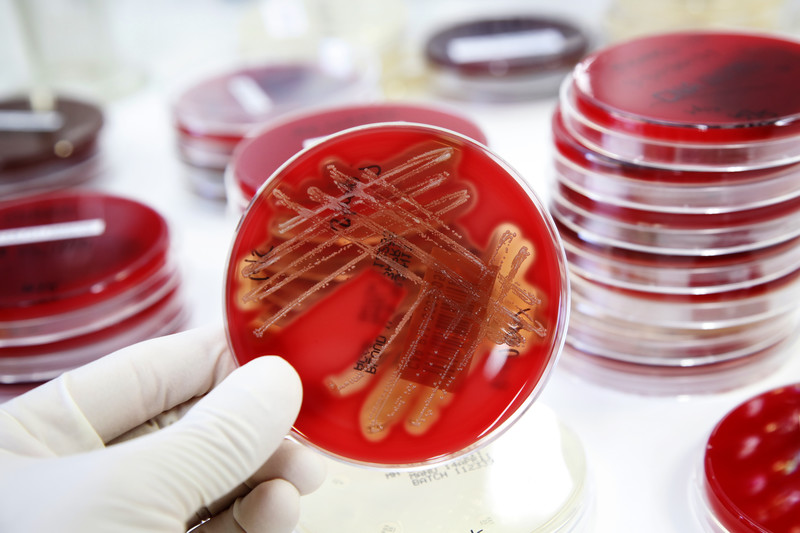
A design engineer’s perspective of medical device biocompatibility
Designing a medical device, but not sure whether it needs to be biocompatible? Will the device have direct or indirect human contact? If the answer is yes, read on! Most devices – or human contacting portion thereof – need to consider biocompatibility requirements. But not to worry, the rigors of compliance vary depending on the nature and duration of contact: requirements for skin contact electrodes and pacemakers are not equal. This blog is filled with wisdom I’ve gained while developing a spinal surgery instrument.
Step one: Familiarize yourself with the applicable standards, in particular ISO 10993-1:2009. ISO 10993 covers biological evaluation of medical devices, and Part 1 provides an overview of the evaluation and testing of applicable medical devices within a risk management process. The FDA’s guidance on use of ISO 10993 is also informative as it highlights areas of particular interest to the FDA and where their requirements differ from the basic standard. Check out my colleagues’ blogs, Vinky Kohli’s FDA Change Insights on Risk Management for Biocompatibility Evaluation and Mark Drlik’s ISO 10993-1 & biocompatibility blog for more.
Consult your QA/RA team, engage with biocompatibility testing facilities, and even contact the FDA or other regulatory bodies. They can also provide immensely helpful guidance on material selection, testing approach, and what reviewers have looked for from similar devices in the past. This information can aid in understanding test sample (prototype) quantity requirements, testing pricing, and timelines.
Armed with an understanding of what’s required in the end, how do you prepare your device to give it the best shot of meeting biocompatibility requirements? One hurdle I encountered was understanding that “biocompatible” material, or “medical grade” material doesn’t really exist, they’re buzz words. What you can find is raw materials tested to USP Class I through VI (VI seems readily available and is the most stringent rating). Also available is material tested to ISO 10993, though at this time it is less common.
While USP/10993 tested raw material is a great place to start, biocompatibility applies to the device as a whole (or human contacting portion thereof). That means the effects of part manufacturing (e.g. machining or injection molding), assembly, and post processing (gamma irradiation sterilization anyone?) all have to be considered for device biocompatibility compliance. Cutting fluid and mold release agent residue, contamination during assembly, and material degradation or chemical change from sterilization processing are as much, if not more, of a concern for biocompatibility than raw material certification. You can get ISO 10993 certified injection molded parts, for example, but in my experience there are a limited number of vendors that can supply them. And as soon as you, let’s say, glue them onto another part and sterilize them, the ISO 10993 certification for the part (while a great starting point) will not satisfy the biocompatibility requirements on its own.
You’ve sourced appropriate materials, designed your device, and defined – to the best of your ability without setting up full ongoing manufacturing controls – part manufacture, assembly, and (if applicable) sterilization processes. What’s next?
If it hasn’t been done already, test your device for sterilization stability and functionality (verification and validation). Ensuring the device performs as expected before investing in time and financially significant biocompatibility testing is highly recommended, especially if design changes are warranted as a result.
Also keep in mind that ISO 10993-1 does not prescribe chemical extraction and/or animal testing: it presents a systematic approach wherein appropriate justification may be made as to why testing is not required. For example, if your device is made from a single, known biocompatible material, and manufacturing processes can be shown to not introduce contaminants, the argument could be made that further biocompatible material would be unnecessary. However, regulatory reviewers will have to agree. In one instance I used a relatively inexpensive and short turnaround cytotoxicity test as an indicator of biocompatibility to support the argument that the 416 stainless steel machined parts that contacted the patient did not require a full suite of biocompatibility tests.
If justification of biocompatibility testing exemption isn’t an option: engage with a reputable testing facility – perhaps the same one you consulted earlier. Build up samples (prototypes) as required to meet the quantity and surface area requirements for the applicable tests – you might need more than you think. Process the samples as would be done in ongoing manufacture (e.g. gamma irradiation sterilization). And then put your device to the test. Good luck!
Discover the Benefits of Enterprise Partnerships and Working with StarFish Medical.
Julian Grove is a Mechanical Engineer in the StarFish Medical Product Development team and enjoys sharing his experiences with biocompatibility testing, sterilization validation, and medical device reprocessing testing with colleagues encountering similar challenges.
Image: 6296388 © bloopiers / CanStockPhoto.com
Learn more: Is Anodized Aluminium Biocompatible?
